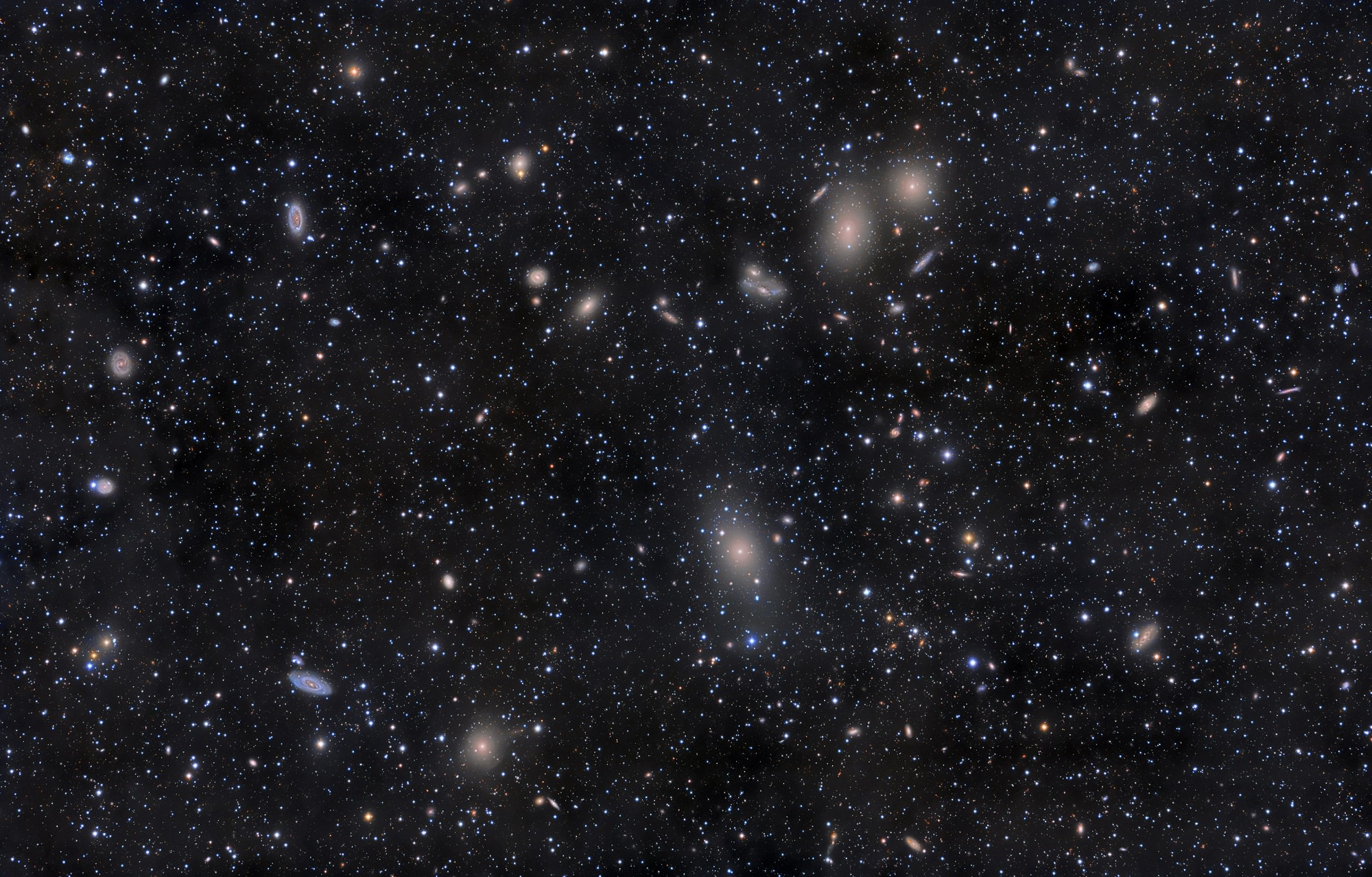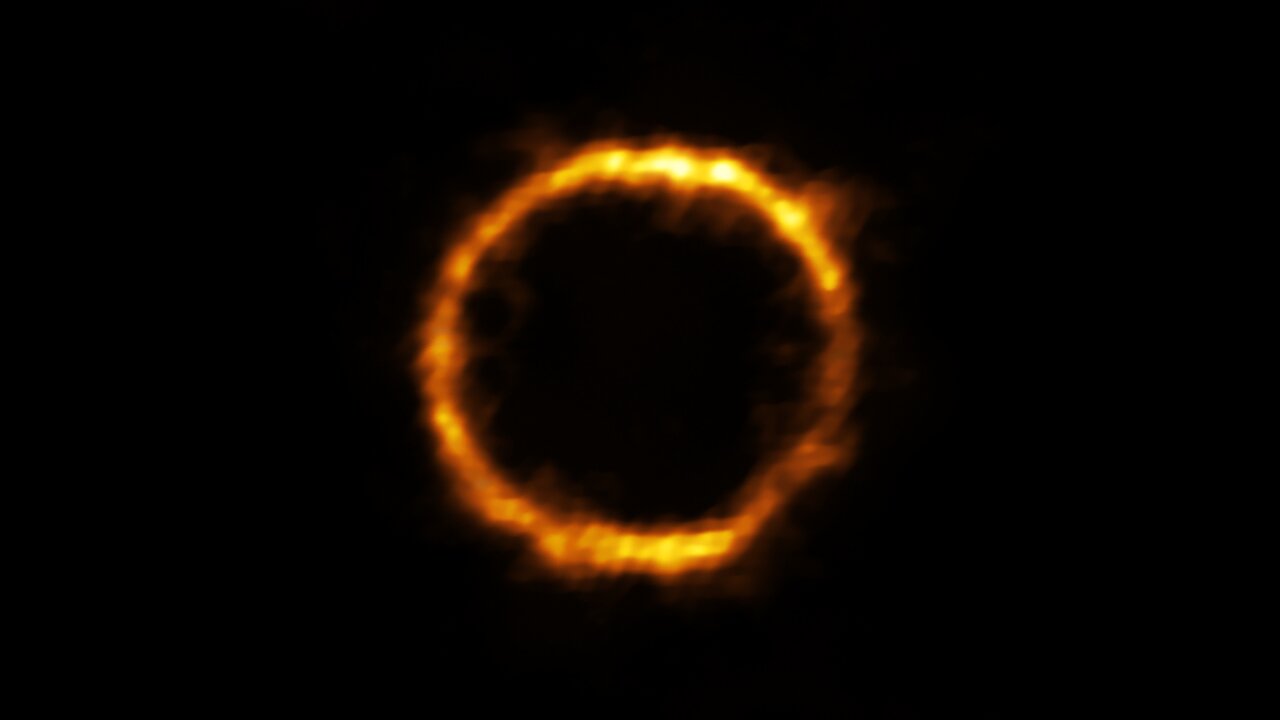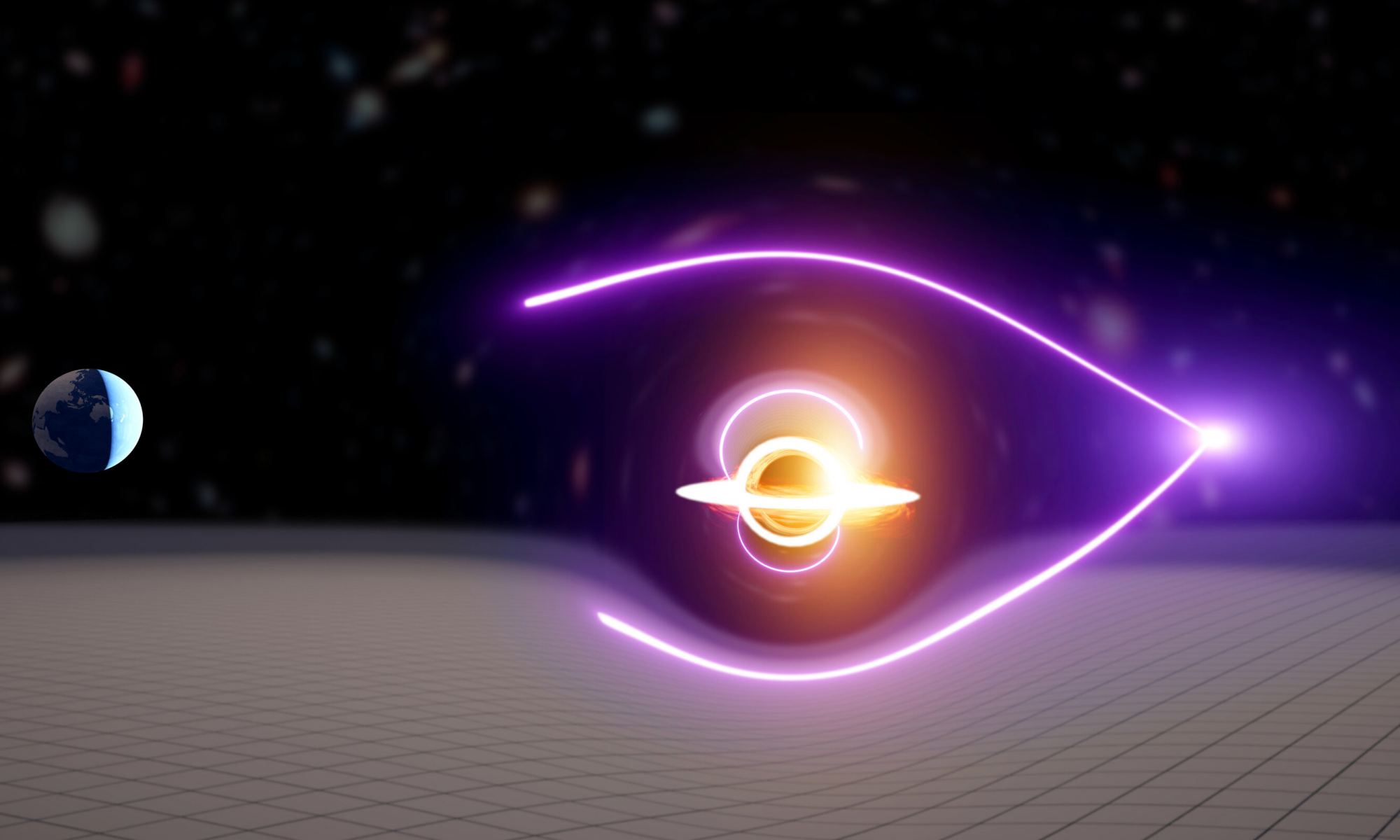Black holes come in three sizes: small, medium, and large. Small black holes are of stellar mass. They form when a large star collapses at the end of its life. Large black holes lurk in the centers of galaxies and are millions or billions of solar masses. Middle-sized black holes are those between 100 to 100,000 solar masses. They are known as Intermediate Mass Black Holes (IMBHs), and they are the kind we least understand.
Continue reading “An Intermediate-Mass Black Hole Discovered Through the Gravitational Lensing of a Gamma-ray Burst”Dark Energy Survey Finds Hundreds of New Gravitational Lenses
It’s relatively rare for a magical object from fantasy stories to have a analog in real life. A truly functional crystal ball (or palantir) would be useful for everything from military operations to checking up on grandma. While nothing exists to be able to observe the mundanities of everyday life, there is something equivalent for extraordinarily far away galaxies: gravitational lenses. Now a team led by Xiaosheng Huang from Lawrence Berkeley National Laboratory (LBNL) and several universities around the world have published a list of more than 1200 new gravitational lensing candidates.
Continue reading “Dark Energy Survey Finds Hundreds of New Gravitational Lenses”One of the Largest, Most Complete Einstein Rings Ever Seen. Astronomers Call it the “Molten Ring”
A very rare astronomical phenomenon has been in the headlines a lot recently, and for good reason. It will be hundreds of years until we can see Jupiter and Saturn this close to one another again. However, there are some even more “truly strange and very rare phenomena” that can currently be observed in our night sky. The only problem is that in order to observe this phenomena, you’ll need access to Hubble.
Continue reading “One of the Largest, Most Complete Einstein Rings Ever Seen. Astronomers Call it the “Molten Ring””If We Used the Sun as a Gravitational Lens Telescope, This is What a Planet at Proxima Centauri Would Look Like

As Einstein originally predicted with his General Theory of Relativity, gravity alters the curvature of spacetime. As a consequence, the passage of light changes as it encounters a gravitational field, which is how General Relativity was confirmed! For decades, astronomers have taken advantage of this to conduct Gravitational Lensing (GL) – where a distant source is focused and amplified by a massive object in the foreground.
In a recent study, two theoretical physicists argue that the Sun could be used in the same way to create a Solar Gravitational Lens (SGL). This powerful telescope, they argue, would provide enough light amplification to allow for Direct Imaging studies of nearby exoplanets. This could allow astronomers to determine if planets like Proxima b are potentially-habitable long before we send missions to study them.
Continue reading “If We Used the Sun as a Gravitational Lens Telescope, This is What a Planet at Proxima Centauri Would Look Like”A new way to map out dark matter is 10 times more precise than the previous-best method
Astronomers have to be extra clever to map out the invisible dark matter in the universe. Recently, a team of researchers have improved an existing technique, making it up to ten times better at seeing in the dark.
Continue reading “A new way to map out dark matter is 10 times more precise than the previous-best method”Something other than just gravity is contributing to the shape of dark matter halos
It now seems clear that dark matter interacts more than just gravitationally. Earlier studies have hinted at this, and a new study supports the idea even further. What’s interesting about this latest work is that it studies dark matter interactions through entropy.
Continue reading “Something other than just gravity is contributing to the shape of dark matter halos”Gravitational-Wave Lensing is Possible, but it’s Going to be Incredibly Difficult to Detect

Gravity is a strange thing. In our everyday lives, we think of it as a force. It pulls us to the Earth and holds planets in orbits around their stars. But gravity isn’t a force. It is a warping of space and time that bends the trajectory of objects. Throw a ball in deep space, and it moves in a straight line following Newton’s First Law of Motion. Throw the same ball near the Earth’s surface, and it follows a parabolic trajectory caused by Earth’s warping of spacetime around it.
Continue reading “Gravitational-Wave Lensing is Possible, but it’s Going to be Incredibly Difficult to Detect”Small Amounts of Dark Matter are Creating Much Stronger Gravitational Distortions than Anyone Expected to See

Dark matter is difficult for astronomers to study, but that doesn’t keep them from trying. And with skill and determination, they continue to find exciting things about the invisible stuff.
Continue reading “Small Amounts of Dark Matter are Creating Much Stronger Gravitational Distortions than Anyone Expected to See”This Distorted Circle is Actually a Galaxy That Looked Very Similar to the Milky Way, Shortly After the Big Bang

The most widely accepted cosmological view states that the first galaxies formed about 380–400 million years after the Big Bang. These were made up of young, hot stars that lived fast and died young, causing the galaxies themselves to be turbulent. At least, that was the theory until a European team of astronomers observed a galaxy 12 billion light-years away that closely resembled the Milky Way.
Using the Atacama Large Millimeter-submillimeter Array (ALMA), the team observed the galaxy, SPT0418-47, as it appeared when the Universe was just 1.4 billion years old. Much to their surprise, the team noted that the structure and features of this galaxy were highly evolved and stable, something that contradicts previously-held notions about the nature of galaxies in the early Universe.
Continue reading “This Distorted Circle is Actually a Galaxy That Looked Very Similar to the Milky Way, Shortly After the Big Bang”Art Installation that Demonstrates How Dark Matter Bends Light with Gravity
At the Science Gallery of Trinity College Dublin, a beautiful work of art is capturing the imagination of people all over the world. It’s called “Dark Distortions,” a work of interactive art by Dutch artist Thijs Biersteker of Woven Studio. Inspired by the ESA’s forthcoming Euclid mission, a visible to near-infrared space telescope that will launch sometime in 2022 to study the mysterious nature of Dark Matter.
Continue reading “Art Installation that Demonstrates How Dark Matter Bends Light with Gravity”





